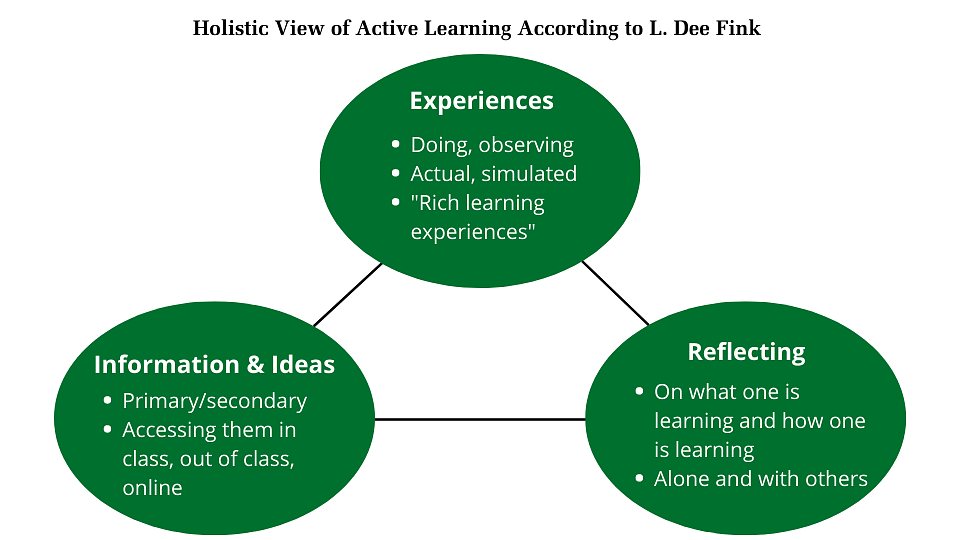Students tend to encounter expert thinking in its most polished, scholarly forms, such as the published peer-reviewed paper or slick textbook, the public release of a carefully produced video or presentation, or the polished lecture perfected over several years. Such texts or performances can demonstrate strong rigor and set very high standards, which are important, but they also tend to obscure the process of their production, such as the many false starts, wrong turns, changes of course, multiple revisions, frustrations or wonders, and so on. As a result, students may not come to understand or appreciate the work involved in thinking and learning that becomes "expert" or achieves the level of rigor an instructor might expect.
Instructors can "pull back the curtain," so to speak, and reveal the process of expert inquiry by including deliberate moments of metacognition or "thinking in action." An example of this is the "think aloud," in which an instructor models how they first encounter a new text, problem or issue - literally speaking aloud their initial impressions, the basic questions they ask themselves to get inquiry started, the immediate associations or connections they make, the preliminary speculations or hypotheses they have, and so on. Such demonstrations can be powerful "aha" moments for students and provide them with important clues for how to engage in their own inquiry and learning process. Instructors can also have students practice think alouds together in pairs or groups, creating explicit moments for simply trying out ideas or approaches with no expectation that they are "right" or must be "correct." The whole class can debrief think aloud exercises, with the instructor and students sharing how and why they chose certain starting places or strategies, what they might do differently or more extensively next time, what they found easy or challenging, and so on.
Generally speaking, metacognitive activities can be organized into three main categories: short, frequent activities; a scaffolded series or regularly repeated activity; or a "big picture," whole course reflection.
An example of a short, frequent metacognitive activity is a "wrapper," in which students engage in self-reflection prior to and after different classroom activities. For instance, before starting an assignment or taking an exam, students can be asked how well they think they can describe an important concept or solve a specific kind of problem or answer a specific kind of question and why. After students then complete the assignment or exam, see their actual results, and receive feedback , they can be asked to the same reflection questions, albeit looking back at their actual work. Then they can compare their prior perceptions/assumptions with their actual performance and identify what was accurate or inaccurate, what worked or didn't work, what they should do again or do differently to prepare for next time, etc. In this way, the assignment or exam (or any other kind of activity) is "wrapped" with self-reflection so that students are thinking not just about content or results but also about their learning process.
An example of a scaffolded series of metacognitive activities is a learning log, in which students, after completing an assignment or activity, take time to reflect on what they found interesting about the assignment/activity, what they found challenging, what strategies they used to complete it, and what other strategies they might choose next time. Maintaining a log of interests, challenges, and strategies over time can help students identify effective patterns to maintain or enhance, or ineffective patterns that need changed or replaced. Minute papers at the end of class or regular surveys are other examples of scaffolded series that regularly engage students in metacognitive work.
An example of a course-level, "big picture" metacognitive activity is a "Dear New Student Letter," in which students reflect on what they have learned about how to succeed in the class - including what they did that was effective or wish they had done differently - and then write this up as advice to future students in the class. An another example is a reflection essay in which students describe what they found most interesting or surprising about the class and why; what was most challenging, why, and how they addressed this challenge; and what is at least one thing they learned in the class they plan to apply or engage further in the future. See other ideas from TEP and UO Faculty for creating powerful endings involving reflection.
Additional examples of metacognitive, reflective activities can be found in the Student Success Toolkit and in TEP's Metacognitive Teaching and Learning Activities handout.

